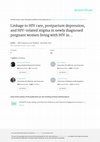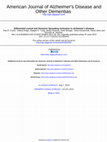Papers by Kristi Stringer

Perspectives on sexual and reproductive health, 2016
Social norms and stigma may play important roles in reproductive health behavior and decision mak... more Social norms and stigma may play important roles in reproductive health behavior and decision making among young women in the U.S. South, who disproportionately experience unintended pregnancies. No research has described the presence and manifestations of social norms and stigmas associated with unintended pregnancy and related decision making from the perspective of this population. Six focus groups and 12 cognitive interviews were conducted between December 2013 and July 2014 with 46 low-income women aged 19-24 living in Birmingham, Alabama; respondents were recruited from two public health department centers and a community college. Semistructured interview guides were used to facilitate discussion about social perceptions of unintended pregnancy and related pregnancy decisions. Sessions were audio-recorded, and transcripts were analyzed using a theme-based approach. Participants described community expectations that pregnancy occur in the context of monogamous relationships, in...
Journal of Urban Technology, 2016
Journal of Family Issues, Apr 24, 2015

AIDS and behavior, Jan 9, 2015
Stigma towards people living with HIV (PLWH) in healthcare settings is a barrier to optimal treat... more Stigma towards people living with HIV (PLWH) in healthcare settings is a barrier to optimal treatment. However, our understanding of attitudes towards PLWH from healthcare providers' perspective in the United States is limited and out-of-date. We assessed HIV-related stigma among healthcare staff in Alabama and Mississippi, using online questionnaires. Participants included 651 health workers (60 % White race; 83 % female). Multivariate regression suggests that several factors independently predict stigmatizing attitudes: Protestant compared to other religions (β = 0.129, p ≤ 0.05), White race compared to other races (β = 0.162, p ≤ 0.001), type of clinic (HIV/STI clinic: β = 0.112, p ≤ 0.01), availability of post-exposure prophylaxis (yes: β = -0.107, p ≤ 0.05), and perceptions of policy enforcement (policies not enforced: β = 0.058, p = p ≤ 0.05). These findings may assist providers wishing to improve the quality care for PLWH. Enforcement of policies prohibiting discriminatio...
Drug and Alcohol Dependence, 2015
Encyclopedia of Social Deviance, 2014
The Wiley Blackwell Encyclopedia of Health, Illness, Behavior, and Society, 2014
The Wiley Blackwell Encyclopedia of Health, Illness, Behavior, and Society, 2014

BMC pregnancy and childbirth, Jan 3, 2014
BackgroundWhile studies have suggested that depression and HIV-related stigma may impede access t... more BackgroundWhile studies have suggested that depression and HIV-related stigma may impede access to care, a growing body of literature also suggests that access to HIV care itself may help to decrease internalized HIV-related stigma and symptoms of depression in the general population of persons living with HIV. However, this has not been investigated in postpartum women living with HIV. Furthermore, linkage to care itself may have additional impacts on postpartum depression beyond the effects of antiretroviral therapy. We examined associations between linkage to HIV care, postpartum depression, and internalized stigma in a population with a high risk of depression: newly diagnosed HIV-positive pregnant women.MethodsIn this prospective observational study, data were obtained from 135 HIV-positive women from eight antenatal clinics in the rural Nyanza Province of Kenya at their first antenatal visit (prior to testing HIV-positive for the first time) and subsequently at 6 weeks after g...
Encyclopedia of Social Deviance, 2014
Encyclopedia of Social Deviance, 2014
Encyclopedia of Social Deviance, 2014
The Social Science Journal, 2014
ABSTRACT We use affect control theory (ACT) to test the veracity of mathematically derived predic... more ABSTRACT We use affect control theory (ACT) to test the veracity of mathematically derived predictions that an exotic dancer will act in ways that are consistent with societal expectations for her “deviant” label. We also explore the strategies that exotic dancers use to maintain the definition of the situation. Our findings indicate that exotic dancers do not define their own identities as predicted. Our data also demonstrate that participants in our study were at least as likely to manage the identities of others as they were their own identities. We conclude our paper by discussing our interpretations of the data and the veracity of ACT.

American journal of Alzheimer's disease and other dementias, 2013
Alzheimer's disease (AD) is known to be associated with disruption in semantic networks. Previous... more Alzheimer's disease (AD) is known to be associated with disruption in semantic networks. Previous studies examining changes in spreading activation in AD have used a lexical decision task paradigm. We have used a paradigm based on average word frequencies obtained from the words generated on the Controlled Oral Word Association Test (COWAT) and the Animal Naming (AN) test. The COWAT and AN tests were administered to a group of 25 patients with AD and 20 control participants. We predicted that the patients with AD would have higher average word frequencies on the COWAT and AN tests than the control participants. The results indicated that the AD group generated words with a higher average word frequency on the AN test but a lower average word frequency on the COWAT. The reasons for the discrepancy in average word frequencies on the AN test and COWAT are discussed.

Journal of Drug …, Jan 1, 2012
Results are presented of enrolling HIV+ active-injection drug users (IDUs) into a peer-driven int... more Results are presented of enrolling HIV+ active-injection drug users (IDUs) into a peer-driven intervention (PDI) to improve their adherence to medical care. Using respondent-driven sampling (RDS), which evolved out of the PDI model, the authors recruited and tested 1,097 IDUs, of whom 145 were confirmed to be HIV+. Despite promises of confidentiality, increased social supports, and direct cash rewards for participating, only 78 (54%) of the HIV+ IDUs enrolled in the subsequent adherence study. Correlates of participation as well as interviews with respondents who declined participating are presented. The seemingly negative findings have important implications for future adherence studies. RDS provided a powerful mechanism for recruiting HIV+ IDUs. But selection biases were revealed to favor sicker yet more socially connected respondents, which resulted in more conservative outcomes with regard to social supports and positive health-seeking behaviors. The analysis may help streamline future efforts using the PDI, which harnesses IDUs' abilities to help one another, by underscoring some of the mechanism's limitations.











Uploads
Papers by Kristi Stringer